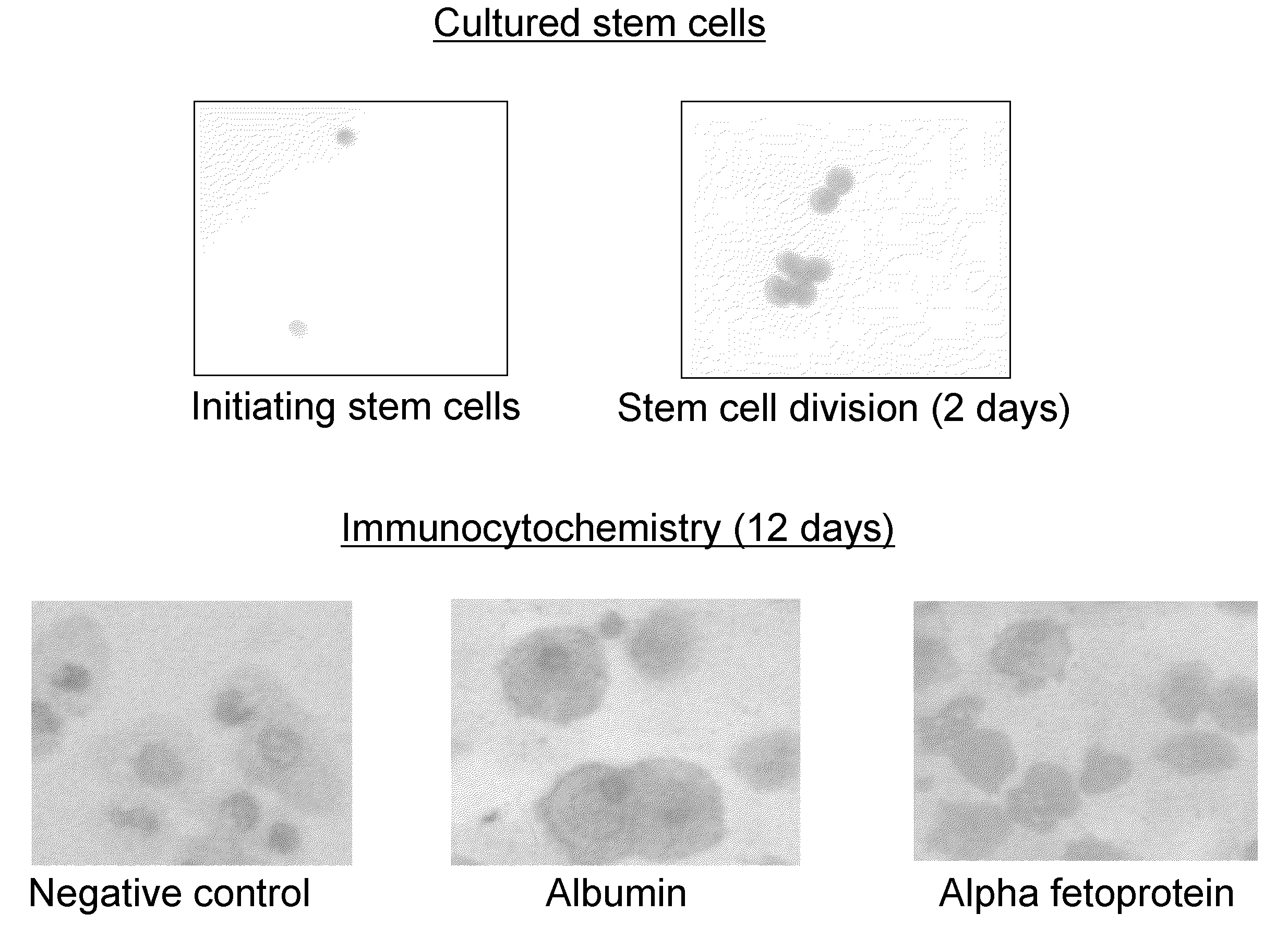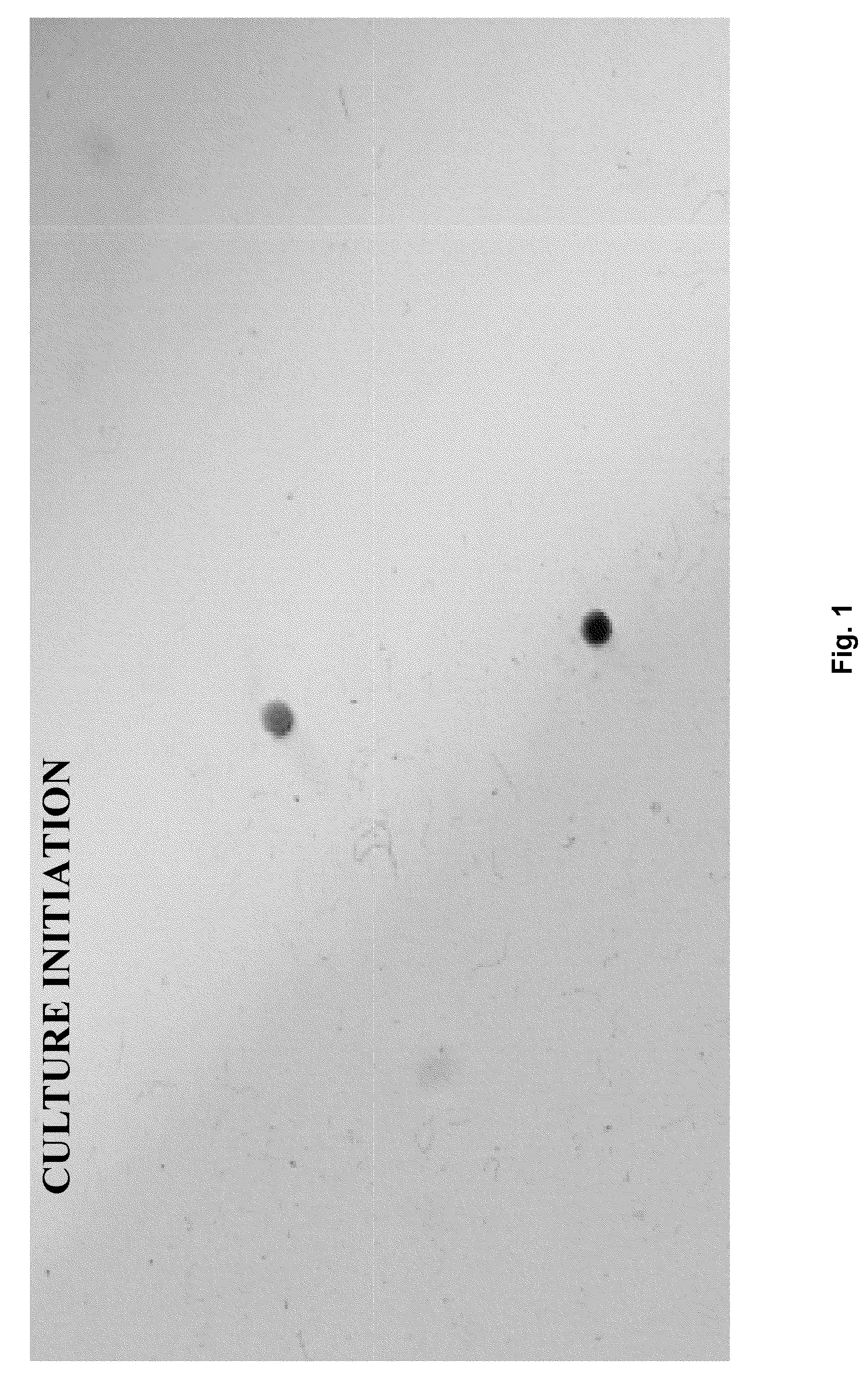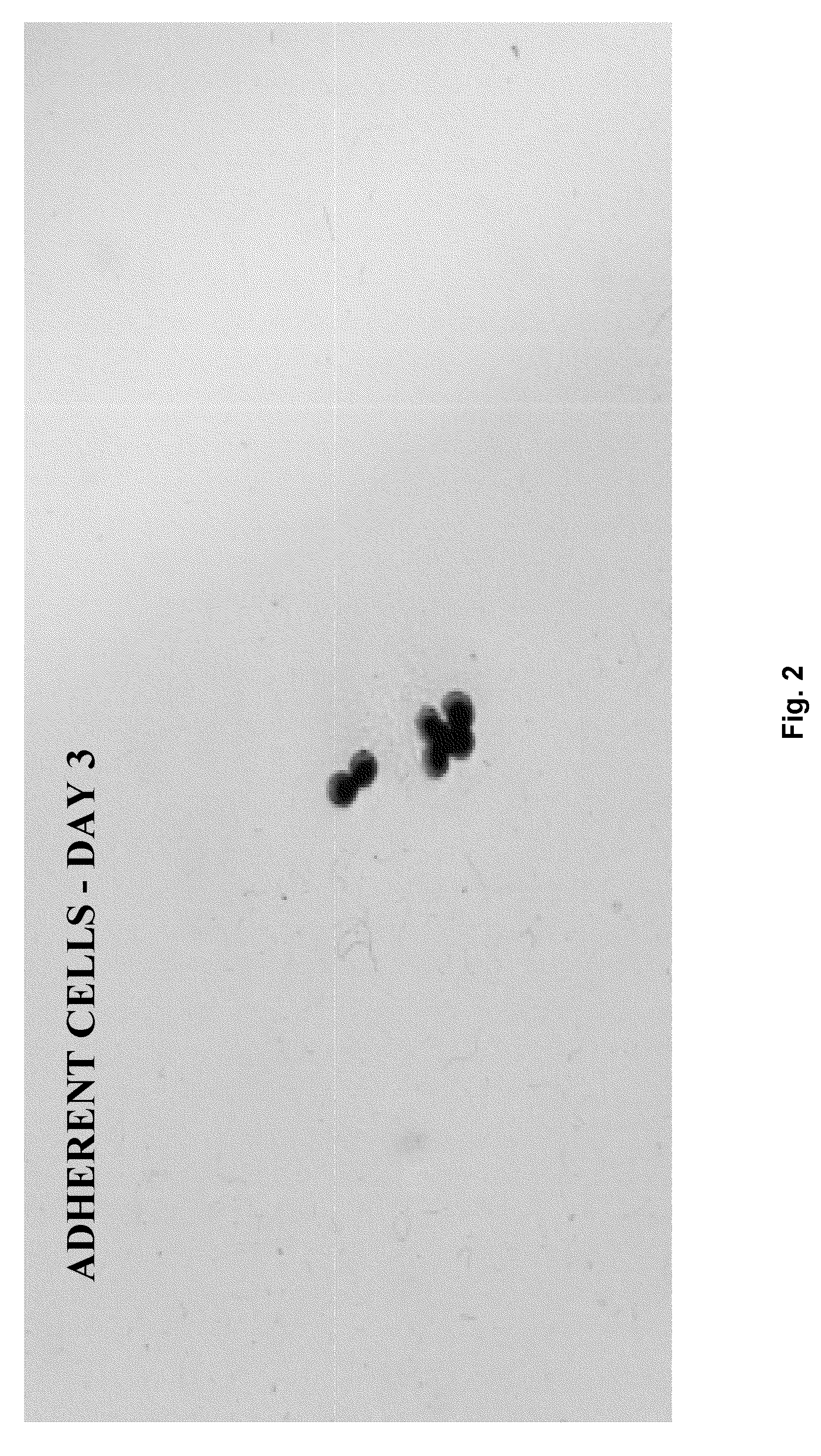Stem cells
a stem cell and stem cell technology, applied in the field of stem cells, can solve the problems of inability to precisely define or isolate msc, limited capacity to provide multiple cell types, and inability to be certain that they represent normal cellular components of the bone marrow
- Summary
- Abstract
- Description
- Claims
- Application Information
AI Technical Summary
Benefits of technology
Problems solved by technology
Method used
Image
Examples
example 1
Cell Extraction
[0094]Haematopoietic cells were obtained from bone marrow or mobilized blood from normal individuals for transplantation purposes. The mononuclear fraction was separated from the whole using a LYMPHOPREP™ density gradient. CD34+ cells were separated from mononuclear fraction using MINIMACS technology. Cells were first labelled with CD34 monoclonal antibody and then with paramagnetic beads. Labelled cells were loaded onto a column held on a magnet, unlabelled cells were eluted and labelled cells released by removing the column from the magnet. The CD34+ cells were incubated at 37° C. in tissue culture plastic vessels for at least 2 h. Non adherent cells were removed by washing with HBSS.
example 2
Cell Culture
[0095]Cells (2×105 / ml) were incubated in Methylcellulose medium containing serum, 100 ng / ml granulocyte colony stimulating factor (G-CSF), 5 ng / ml interleukin-3 (IL-3) 20 ng / ml stem cell factor (SCF) and 1 ng / ml granulocyte macrophage colony stimulation factor (GM-CSF). This cytokine combination may also be referred to as “basic cytokines or “GM-mix”. This resulted in heterogeneous populations of cells, which subsequently can be characterized. Selected individual populations were then targeted for differentiation using tailored cytokine cocktails.
example 3
Flow Cytometry and Immunocytochemistry
[0096]Flow cytometry. The adherent population that had developed in the cultures was removed by scraping the dish. Cells were fixed in 4% paraformaldehyde and permeabilized. Cells were labelled with monoclonal antibodies conjugated with FITC and analyzed using Becton Dickinson flow cytometer.
[0097]Immunocytochemistry. The adherent population that had developed in the cultures was removed by scraping the dish. Cells were cytospun onto glass slides and fixed by methanol. Cells were labelled with monoclonal antibodies and visualized using the APAAP (alkaline phosphatase anti-alkaline phosphatase) reaction.
[0098]Results of flow cytometry and immunocytochemistry are shown in Table 1 below.
TABLE 1AntigenFlow cytometryImmunocytochemistryAlbmumen9.2%*Large cells +ve**Alpha feto protein12.3%Large cells +veAlpha 1 antitripsin20.1%N / AcMET (HGF receptor)34.9%+veSmooth muscle actin61.2%Large cells +veGFAP (astrocytes)57.4%−vecKIT22.1%−veVimentin6.3%Large cel...
PUM
| Property | Measurement | Unit |
|---|---|---|
| temperature | aaaaa | aaaaa |
| temperature | aaaaa | aaaaa |
| concentration | aaaaa | aaaaa |
Abstract
Description
Claims
Application Information
 Login to View More
Login to View More - R&D
- Intellectual Property
- Life Sciences
- Materials
- Tech Scout
- Unparalleled Data Quality
- Higher Quality Content
- 60% Fewer Hallucinations
Browse by: Latest US Patents, China's latest patents, Technical Efficacy Thesaurus, Application Domain, Technology Topic, Popular Technical Reports.
© 2025 PatSnap. All rights reserved.Legal|Privacy policy|Modern Slavery Act Transparency Statement|Sitemap|About US| Contact US: help@patsnap.com



